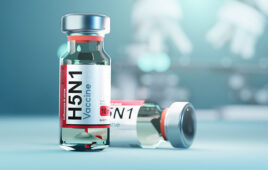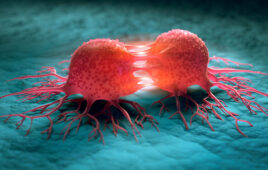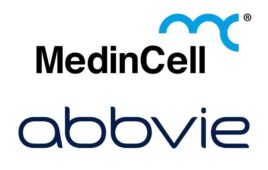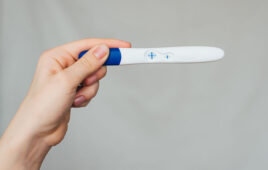Cell-based assays are subject to surprise attacks from a common threat: mycoplasma. Aseptic techniques can ward off contamination.
 Drug discovery researchers depend on cell culture and cell-based assays to uncover the intricacies of cellular life and behavior as well as a cell’s response to outside influences. A clear threat to the efficiency and validity of this research, especially when using mammalian cells, comes from mycoplasma. The presence of this virtually invisible contaminant corresponds to increased cost, time and effort to destroy the organisms at a minimum, and the obligation to repeat all previous cell-based research in an extreme or previously undetected occurrence.
Drug discovery researchers depend on cell culture and cell-based assays to uncover the intricacies of cellular life and behavior as well as a cell’s response to outside influences. A clear threat to the efficiency and validity of this research, especially when using mammalian cells, comes from mycoplasma. The presence of this virtually invisible contaminant corresponds to increased cost, time and effort to destroy the organisms at a minimum, and the obligation to repeat all previous cell-based research in an extreme or previously undetected occurrence.
Unfortunately, a vast majority of cell culturists, up to 90% by some estimates, choose not to test for this contamination, and may have been using adulterated cell lines, and therefore inaccurate data, for years.
 click to enlarge Figure 1. Typical morphology of a mycoplasma organism with a dense core and light border. (Source: Lonza Walkersville, Inc.) |
Mycoplasma—historically named pleuropneumonia-like organisms (PPLO)—are amorphous, but often spherical. Grown on a solid substrate, mycoplasma are often characterized by a fried-egg appearance (Figure 1), with a dense core surrounded by a lighter border. Lacking a cell wall, they act as obligate parasites by drawing nutrients and sterols, like cholesterol, directly from vertebrate hosts to grow and to sustain a cytoplasmic membrane. This membrane consists of mostly structural and enzymatic lipoproteins and a small portion of lipids appropriated from the host cell. Antibiotics that interfere with cell wall formation or integrity are therefore ineffective at destroying mycoplasma. These extremely small organisms can pass through most filters and can grow to high concentrations (108 cfu/mL or more) without detection or obvious symptoms. Although dozens of mycoplasma strains exist, the majority of laboratory contamination is attributed to just a few types (Table 1): Acholeplasma laidlawii, Mycoplasma arginini, M. fermentans, M. hominis, M. hyorhinis, and M. orale.
Mycoplasma multiply slowly, and as symptoms of this contamination are subtle at best, they may have a profound effect on the host cell’s expression, function, growth, intracellular organelle characteristics, metabolism, secretion, and synthesis. Alteration of one or more of these characteristics can skew data or seriously compromise the validity of the final product or research results.
| Table 1: Common Mycoplasma Species Estimated frequency | |
| Acholeplasma laidlawii |
5-20% |
| Mycoplasma arginini |
20-30% |
| M. fermentans |
10-20% |
| M. hominis |
10-20% |
| M. hyorhinis |
10-40% |
| M. orale |
20-40% |
| Estimated frequency of common mycoplasma species. (Source: DSMZ GmbH) | |
Cross-contamination and poor aseptic techniques are the most common methods of mycoplasma transmission into cell cultures. Therefore, proper aseptic cell culture techniques are critical to prevent or reduce the risk of mycoplasma infection as well as other biological and chemical contamination.
Aseptic techniques include the use of personal protective equipment, laminar flow hoods, and a reduction in turbulent airflow in the laboratory. Air currents can be created from other personnel in the room and opening and closing of an incubator or laboratory door; and in a laminar air hood, air flow can be disrupted by stored materials and equipment. Debris and aerosols are easily carried or harbored by these air currents, created by pipetting, talking, or even normal environmental conditions, and deposited into a cell culture or related items. Proper training and full regard to the tasks at hand are also important to greatly reduce environmental risks and careless accidents.
Cell cultures, media and reagents should be clearly-labeled and stored in separate locations for each cell line. Additionally, any new cells, media or reagents should be quarantined, regardless of their source, until proven mycoplasma-free. Even well-intentioned gifts from other laboratories can run the risk of contamination. Sera and other animal-derived products should also be quarantined and routinely tested to ensure that they are free of mycoplasma.
Finally, consumables and equipment should be subject to careful aseptic procedures. Consumable items should be purchased, pre-sterilized, from a reputable manufacturer, and stored away from clutter and cardboard packaging materials to reduce airborne debris. Cell culture-related equipment should be thoroughly cleaned on all surfaces, especially in hard-to-reach areas, and routinely serviced and calibrated to ensure optimal operation. Of particular concern are incubators, laminar flow hoods, water baths, refrigerators and freezers, and waste containers. In addition, all work surfaces and reagent/media containers should be completely disinfected prior to each use. Mycoplasma can survive for weeks on these surfaces prior to infecting a healthy cell culture.
Detective work
If mycoplasma contamination is suspected, several tests are available with varying degrees of sensitivity, strain identification, and time required.
Direct culture, considered the gold standard, is the most sensitive method of mycoplasma detection as it can detect a single colony; however, it is the most complex and time-consuming. A sample is directly inoculated on complex media in liquid or solid form and grown to a level where it can be compared to a live mycoplasma control. Some mycoplasma strains are unable to grow unaided and require a host cell culture. These methods require several weeks to completion and involve use of live mycoplasma controls, and as such, many laboratories reduce their risk and associated time by using an experienced outside testing facility.
Indirect testing measures intracellular organelles or even substances created by mycoplasma organisms, with the added benefit of detecting non-cultivatable or difficult strains. Most tests can be performed in-house with relatively low cost and minimal time.
One popular indirect method is polymerase chain reaction (PCR), which uses primers to detect targeted strain-specific mycoplasma sequences with a high degree of sensitivity. Results are obtained in a few hours; however, there is a risk of false negatives from very low level and very high level (overloaded) infections. False positives can arise in the presence of non-viable mycoplasma DNA, or even DNA fragments from the host cell or other DNA-based contaminants. Nucleic acid hybridization is another method that shares a similar chemistry to PCR without an amplification step.
 click to enlarge Figure 2. A bioluminescent assay reaction uses luciferace to detect mycoplasma ATP. (Source: Lonza Walkersville, Inc.) |
Microplate-based bioluminescent assays test for toxins, enzymes or even energy produced by specific strains of mycoplasma. One such assay measures adenosine triphosphate (ATP) using luciferase. A weak detergent lyses the cytoplasmic membrane, and ATP is released from mycoplasma. The cell wall from other cells in culture is unaffected by the detergent and therefore maintains cellular ATP. Mycoplasma ATP then reacts to form light and other byproducts (Figure 2), and the light is easily analyzed by a multi-mode microplate reader with qualitative results in 30 minutes or less.
Microplate-based antibody assays such as ELISA, bind to and measure type-specific mycoplasma antibodies and have moderate sensitivity. A fixed sample is exposed to a detection antibody, which will bind to any mycoplasma antigen present. This complex then binds to an enzyme and substrate, causing a change in measureable properties. Antibody tests can use colorimetric- or fluorescent-based substrates, both of which can be analyzed on a multi-mode microplate reader, with results in several hours to one day.
Finally, fluorescence-based DNA stains bind to non-type-specific mycoplasma DNA and are examined with a UV-filter equipped microscope. This technique works best in instances of strong contamination, or after co-incubation with an indicator cell line, and may require several days to obtain results. Additionally, advanced experience is often necessary to distinguish the particulate pattern of mycoplasma contamination from the cell nuclei.
Typically, a primary test is used as a presumptive indication, and at least one secondary test (often direct culture) provides confirmation of any positive primary results.
If mycoplasma contamination is confirmed, the best course of action is to inactivate and dispose of the culture and related reagents, and thoroughly disinfect all equipment and surfaces. Although often a painstaking decision, alternative treatments are risky and often temporary at best.
Antibiotic treatment for this type of contamination must be bacteriocidal, not bacteriostatic. Common antibiotics that fall into this category are ciprofloxacin, BM-Cyclin and quinolone derivatives, and require lengthy and rigorous treatment schedules. Even so, the risk of failed treatment, re-infection, and even drug-resistance should not be ignored. Also, the reaction of the cells to antibiotic treatment should be carefully monitored to reduce cell damage or death.
Chemical and physical mycoplasma treatments including detergents, chemicals, heat, and passage in nude mice, vary greatly in efficiency and should be used with great caution to prevent cytotoxic side effects to the cell culture itself.
As drug discovery researchers continue to extract useful information on cellular behavior, careful attention to culture conditions, handling, and mycoplasma testing can strongly support the validity of results. By avoiding mycoplasma hazards, one can save time, money and effort that could be devoted to core research projects.
About the Author
Dr. Paul Held is a Senior Scientist at BioTek Instruments in Winooski, Vt. In addition to a PhD in Molecular Biology from Albany Medical College, Dr. Held has fifteen years of cell culture experience.
This article was published in Drug Discovery & Development magazine: Vol. 11, No. 6, June, 2008, pp. 30-32.
Filed Under: Drug Discovery



